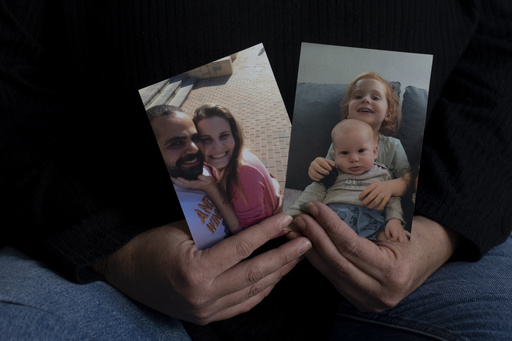
“`html
RAMAT GAN, Israel — After spending 484 days in captivity within Gaza, Keith Siegel found himself overwhelmed with questions. His primary concerns included the well-being of his 97-year-old mother and the fate of his neighbors following Hamas’ attack on October 7, 2023. Moreover, he was perplexed about the extended duration it took to secure his release.
Due to limited access to information during his time as a hostage, Siegel, who holds dual American-Israeli citizenship, was only informed months after his captivity that his son had survived the initial attack that ignited the war in Gaza. While he was aware that his family and others were actively advocating for the release of hostages, he remained largely uninformed about the world outside his confinement.
“He really wanted to know everything as soon as possible, just to put all the question marks away and to know what happened,” shared his daughter, Elan Siegel.
Those who have been released as part of a fragile ceasefire in Gaza face a daunting surge of information about their loved ones and the devastating changes to their communities. Their families also confront the challenge of delicately updating them on missed events without intensifying their distress.
Experts emphasize the importance of a careful approach. “The information is definitely traumatic so you have to really be sensitive, careful and monitor the pace in which you expose the information,” advised Einat Yehene, head of the rehabilitation division at the Hostages and Missing Families Forum.
For numerous returned captives, the process of catching up is proving to be painfully difficult.
Eli Sharabi, 52, endured a harsh reality after being entirely cut off from the outside world for 16 months, according to his brother, Sharon Sharabi. Before his release, he was coerced into participating in a staged ceremony organized by Hamas, where he expressed his eagerness to reunite with his family. However, upon his return to Israel, he was met with the devastating news that his wife and two teenage daughters had been killed in their home during the October 7 attack.
“Beyond the emotional burden and difficult experiences he faced in captivity, he had to bear this horrible loss on the first day that he left from there,” Sharon Sharabi noted during an interview with Israeli Army Radio.
Or Levy, 34, faced a similar heartache upon his freedom when he discovered that his wife, Einav, had also died on October 7. “For 491 days, he held onto hope that he would return to her,” his brother, Michael Levy, recounted to reporters.
Levy experienced the bittersweet reunion with his young son, who had reached significant developmental milestones, like getting potty trained, while his father was absent. “It took you a long time to come back,” the three-year-old said to him, as reported by Israeli media.
Upon returning home, Keith Siegel’s first inquiry was about his mother, Gladys. The moment he saw the tears in his wife’s eyes, he instantly understood that she had passed away, as recounted by his daughter.
While in captivity, Siegel managed to piece together traces of information concerning his family. After some months, he heard his daughter on the radio mentioning that his son had survived the attacks. Other released hostages have reported receiving messages from their families through various media channels.
Yarden Bibas, who was released recently, learned from his captors that his wife, Shiri, and their two young sons, Ariel and Kfir, were deceased. Contrary to this grim report, his captors also claimed they had been seen in Tel Aviv, creating confusion regarding their actual situation.
Despite his release, Bibas still grapples with uncertainty. His family remains in Gaza, and there are serious concerns expressed by the Israeli government about their safety.
In addition to their personal tragedies, freed hostages like Siegel are also bombarded with over a year’s worth of global events information: Donald Trump has returned to the White House, Israel launched direct strikes against Iran, and the Israeli forces killed Hezbollah’s long-standing leader, Hassan Nasrallah.
Siegel’s family chooses to impart information gradually, akin to an adult explaining complex matters to a child. “You answer only what he asks and not more than that,” Elan explained.
However, the questions keep coming. Siegel was eager to know about the fate of his hometown, Kfar Aza. He inquired if anyone was taking care of the plants and who had perished in the Hamas assault.
Throughout Israel, Siegel’s image has been widely recognized, featured in protests and banners highlighting the plight of hostages. Prior to his release, numerous Israelis shared videos of themselves preparing his favorite pancake recipe as a show of solidarity.
Aviva, Siegel’s wife, who was released in the initial weeks of the conflict, compiled a scrapbook for him containing notes from influential individuals she had urged to advocate for his release, including Israeli Prime Minister Benjamin Netanyahu and former U.S. President Joe Biden.
Siegel was particularly bewildered to learn that various global leaders were aware of his captivity. His daughter, Elan, recounted how he expressed his disbelief: “If they knew, how can it be that I was there for so long?”
“`

